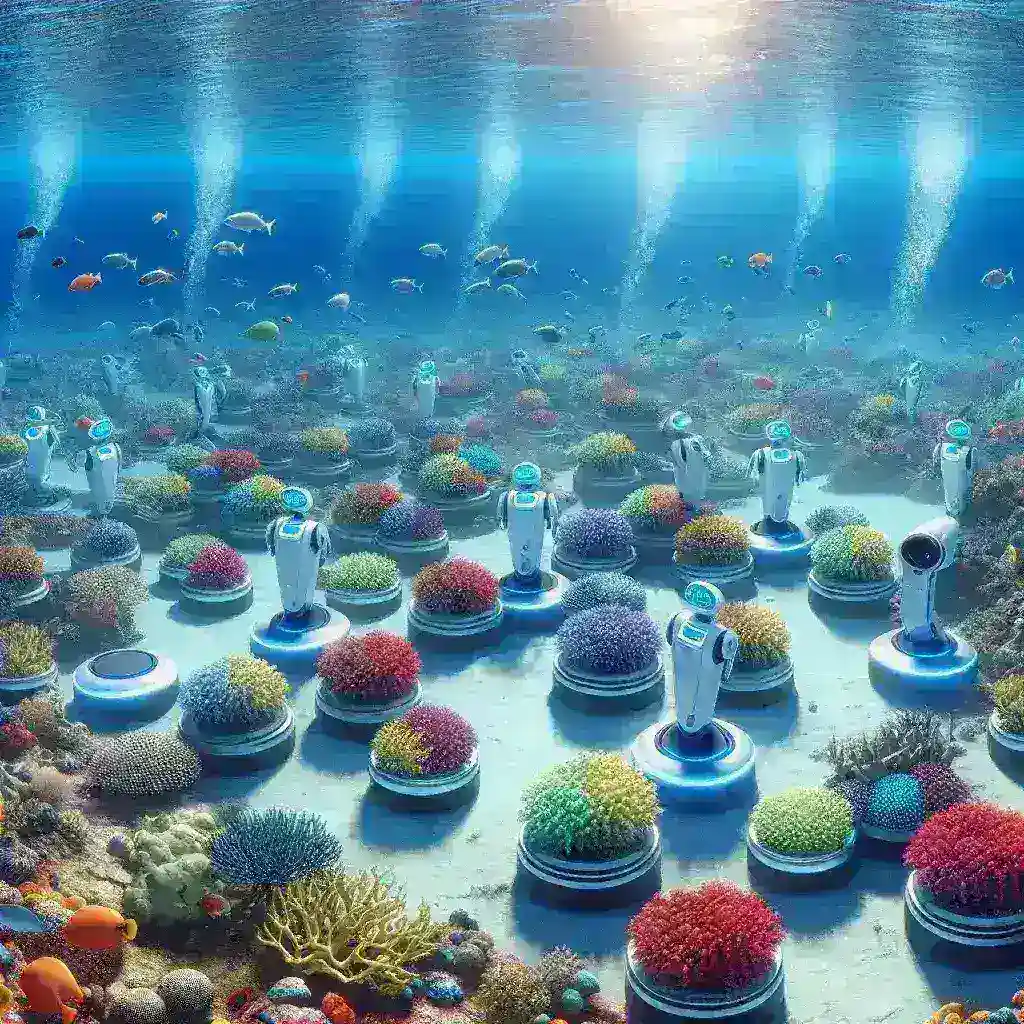Introduction
The world’s coral reefs, often dubbed the “rainforests of the sea,” are experiencing unprecedented degradation due to climate change, pollution, and overfishing. With nearly 50% of the world’s coral reefs already lost, innovative solutions are urgently needed. Enter AI robotic fleets—an exciting and transformative approach to restore coral ecosystems through systematic planting of coral nurseries.
The Importance of Coral Reefs
Coral reefs are vital for marine biodiversity, providing habitat and shelter for many marine organisms. They also serve as natural coastal barriers that protect shorelines from erosion and storm surge. Economically, coral reefs contribute billions of dollars to the global economy through tourism, fishing, and coastal protection. However, the decline of these ecosystems poses significant challenges to marine life and human communities alike.
Historical Context
- Coral Reef Decline: Over the past century, human activities have led to a dramatic decline in coral health. Major events such as the Great Barrier Reef bleaching events illustrate the urgency of restoring these ecosystems.
- Traditional Restoration Methods: Historically, coral restoration has involved manual planting that is often labor-intensive and slow. These methods have limitations, including high costs and limited scale.
How AI Robotic Fleets Work
AI robotic fleets are equipped with cutting-edge technology that allows them to operate in challenging marine environments autonomously. These fleets are designed to plant coral nurseries efficiently and at scale. They utilize advanced algorithms for navigation, monitoring, and data analysis.
Key Components of AI Robotic Fleets
- Autonomous Drones: Underwater drones capable of navigating coral habitats and identifying optimal planting sites.
- AI Algorithms: Algorithms analyze environmental conditions and coral health, making real-time decisions to maximize restoration success.
- Remote Monitoring: Continuous data collection allows scientists to monitor the health of planted corals and adjust strategies accordingly.
Benefits of Using AI in Coral Restoration
Efficiency and Scalability
AI robotic fleets can plant thousands of coral fragments in a fraction of the time it would take human divers. This efficiency opens the door for large-scale restoration projects that can significantly impact reef recovery.
Cost-Effectiveness
By reducing labor costs and increasing planting success rates, AI technology can make coral restoration more economically viable. Such advancements are crucial for attracting funding and investment in marine conservation.
Data-Driven Decisions
The use of AI allows for data-driven decision-making, ensuring that restoration efforts are based on scientific evidence. This approach helps in understanding the best practices for coral planting and monitoring.
Challenges and Considerations
Technological Limitations
Despite the promise of AI robotic fleets, challenges remain in terms of technology reliability, especially in adverse environmental conditions.
Ecological Concerns
Introducing artificial structures for coral nurseries may have unforeseen impacts on local ecosystems. It is crucial to conduct thorough studies to avoid disrupting existing marine life.
Future Predictions
The future of coral restoration using AI robotic fleets looks promising. As technology continues to advance, the potential for more sophisticated and effective restoration methods will increase. With the integration of machine learning and improved AI models, we can expect enhanced adaptive management strategies for coral reef ecosystems.
Real-World Examples
Several initiatives around the globe are beginning to employ AI robotic fleets in coral restoration. For example, projects in the Caribbean and Southeast Asia are leading the charge in utilizing robotic technology for large-scale coral planting.
Conclusion
AI robotic fleets represent a revolutionary approach to one of the most pressing environmental challenges of our time—coral reef restoration. By harnessing technology and innovation, we can tackle the threats posed to these vital ecosystems and work towards their recovery. As we look to the future, supporting these initiatives will be key to preserving the biodiversity and economic benefits that healthy coral reefs provide to our planet.

